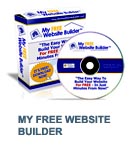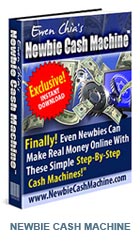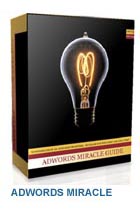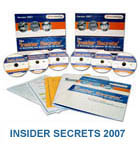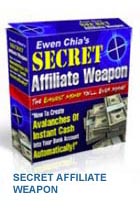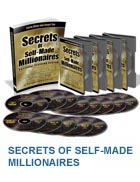How to Write Killer Email Promos that Effectively Convert into Sales
Wednesday, February 28, 2007
The use of email is so widespread nowadays – either at work, as a form of communication with colleagues, superiors and counterparts, or at home, as a form of communication with friends both local and overseas.
Do you know that emails can also be used as a communication tool to sell ebooks, software, live seminars, consultation packages, home study courses, etc.? If the right email tactics are used, these emails can help you make big money on demand.
Michael Rasmussen has just shared with me some of the very best tactics to create a killer email and I’ll like to share what I’ve learnt with all of you. For those who do not know who Michael Rasmussen is, let me do a brief introduction. Michael Rasmussen is one of the most soft after Joint Venture (JV) partners in the world. He has the power to create email promotions that effectively convert into gross sales that amounted $162,000 and $81,000 in net profit. Amazing, isn’t it?
Learning how to write emails is like playing an instrument
Why is that so? Because it is impossible for you to be able to write a good solid email that effectively converts into sales by just reading this article alone (I’m sorry to say that).
You need to practise the skills learnt in this article. Just like when you are learning how to play an instrument – you need to first learn how to read the musical notes, then musical scales, patterns and exercises. You need to constantly practice. Let me give you another example. Let’s say you want to learn how to ride a bicycle. Do you think you’ll be able to master how a bicycle properly by just reading a step-by-step book on how to ride a bicycle? No. You only gain the basic knowledge necessary to ride a bicycle. You need to constantly practise riding on the bicycle in order to master it.
The same goes for learning how to write killer email promos – you need to constantly practice writing them. One good tip Michael has shared with us is to print out those good email promos you receive, and write out the whole email in your own handwriting. In the process of doing so, your mind gets trained subconsciously to write a killer email.
1st step to writing killer emails promos - set your intention
Before you begin writing your mail promo, you need to set your intention. You need to ask yourself what you want to accomplish from this email promo that you’re going to send out – whether is it to sell 25 copies of your products within 7 days, get 50 people to sign up for a 30 day trial of your product, motivate your readers to promote your newsletter, the list goes on and on and on…
If you have an intention, your emails will be very tightly focused. You should also bear in mind that you should remove anything that does not directly affect your outcome from your email promo.
2nd step to writing killer email promos – Ask yourself 6 magic questions
Are you with me so far? Good.
The 2nd step to writing killer email promos is to ask yourself these 6 magic questions:
Question 1: What is your intention?
What is your intention of sending out your email promo?
Is it to get reader to sign up for a free account at a free advertisement forum you are promoting?
Is it to motivate reader to place their 1st free advertisement rightaway?
You have to very clearly define your intention.
Question 2: Who are you?
You need to briefly identify who you are, and what you are doing.
This is because people will not buy something from people they don’t know. Would you want to buy something from an anonymous person? I don’t think so, right?
Question 3: What do you want?
Ask your readers a question:
“Are you tired of wasting your hard-earned money on advertisements that doesn’t covert?”
“Would you like to get visitors to your site for free?”
Question 4: Why should you care?
“Because people are tired having to pay to advertise, and you want a free way to promote your products. What’s more – there are people of the forum right now will be viewing your free advertisements and buy from you”
Question 5: What else is in it for me?
You can create a back-link to your site with the website you are promoting, that has a high Alexa ranking. You will be able to increase the amount of traffic to your web and in turn, be able to make more sales – all these without spending money.
Question 6: What do I do know?
What do you want your readers to do now? Do you want them to click on the link and sign up for a free account now?
Let them know what you want them to do.
Writing your subject line
Your email subject line is actually very important. It is something that your readers will see before they decide to click on it to read your email or send it to the thrash can.
Do not try to sell someone a product in the subject line. They’ll send emails like these to the thrash can right away.
You should not also give away too much information in the subject line. Otherwise, they will not open up the email and read what’s in it.
Compare the following 2 subject lines:
Subject Line 1 - “(Name) why you should never give away the secrets in the subject line”
Subject Line 2 – “How many times do you make mistakes in your subject line?”
Which one is better? If you answer subject line 2, you are correct. Your subject line should make people curious and want to open up and read the email.
Personalising your email subject line
You should not put the person’s name on the subject line for the sake of using it.
Compare the following 2 subject lines:
Subject Line 1 – “(Name) – the real secrets of writing emails”
Subject Line 2 – “Hey (Name), check out these 3 secrets for writing killer emails”
If you receive 2 emails with the 2 subject lines above, which email will you open and which email will you thrash? You’ll open up the email containing the 2nd subject line and thrash the 1st right?
Why is that so? It’s because the email with the 2nd subject line sound more conversational right? You include names in subject lines to make it sound conversational. Therefore your subject line should also sound conversational - as if you are talking to the person in his / her face.
Writing subject lines like bullet points
You write subject lines just like writing bullet points – you only tell people what they’ll learn. You do not give them the actual content. This is called writing “blind subject lines”.
Let me give you an example. Use the following subject line:
“Here’s a little known secret subject line trick that explodes your results”
Instead of:
“Here’s why using blind subject lines is so important” (You’ve already let the person know in the subject line that the email is about “blind subject lines”)
Subject lines should be benefit-oriented
You should give your readers a taste of the benefit in the subject line without actually telling them how it is done.
An example of this type of subject line is as follows:
“Here’s an easy way to boost your income by 20% in just 24 hours…”
Most people will be interested to learn how to boost their income by 20% in 24 hours. Who doesn’t? People will then click on the email and read the contents.
You may also ask your reader a question in the subject line, such as:
“Do you make this mistake with X?” (X is whatever your reader is interested in – your niche market)
You should always keep your subject line relevant to your audience.
How to create an opening that make people want to read the rest of your email?
The following guidelines are how you can create an opening in your email that makes people want to read the rest of the email:
- Greet reader like how you greet your friend
- Always talk to 1 person in your email. Avoid saying something like this - “… you guys will enjoy it…”
- Write your email exactly the same way you talk to your friends.
Here’s an example of a good email opening:
“Hey (Firstname), Jun Yuan here, and I have a quick question for you. Do you actually enjoy the process of writing email promo? I don’t know about you, but I used to get so frustrated at how much work I took to create an email that actually made me money.
Have you ever felt like that? I know I did until I stumbled upon a really simple system for creating killer email promos that bring in money every single time.
And the best part is, when you use this system, the email practically write themselves! Here’s how it work…”
The above email, written in a conversational format, inspires trust from your readers.
Here’s an example of a bad email opening:
“Oh my GOD, (Firstname)! I have to tell u something QUICK before I EXPLODE! Forget everything you’ve heard about writing email promos, because I just discovered a NUCLEAR POWERED system for writing killer emails that practically suck the money right out of people’s pockets!”
Do you feel like you’ve just been shouted at after reading the email above? It is bombarded with capital lettered words and exclamation marks.
Go straight to the point
Your emails must go straight to the point. People are usually very busy and do not have the time to sit down and read each and every email they receive.
People will only read your emails if you can convince them to do so. You need to give them a reason why they should read your emails.
Do not include too much information about yourself
Read the following email:
“Hey firstname, its Jun Yuan, and WOW, am I exhausted. I just stayed up the entire nite getting my new home study course ready for you to check out. I wanted to go to the ball game last night, but I knew how important this was to your future, and so blah blah blah…”
Do you think people actually bother about your life? NO! People only care about what’s in it for them. So please, do not write too much information about yourself. People are not interested whether you are exhausted, whether you went for the ball game, etc.
Do not be too loud and pitchy
Read the following email again:
“Oh my GOD, (Firstname)! I have to tell u something QUICK before I EXPLODE! Forget everything you’ve heard about writing email promos, because I just discovered a NUCLEAR POWERED system for writing killer emails that practically suck the money right out of people’s pockets!”
Don’t you find the above email too loud and pitchy? There are also many words that are capitalized and too many “!!”. People hate to be yelled and pitched to. So please don’t do it.
You need to remember – always talk to your reader, not at your reader.
Writing body copy of your email
You should keep the content in your email body super relevant. The purpose of you sending those emails is not to inform / entertain but to ask them to click on the link to visit the website containing the item you’re selling.
Again, do not talk about your personal life in the body copy of the email. Instead of writing about how you’ve enjoyed your recent vacation, write about the vacation your reader will be taking if he / she follow the email course.
Write powerful bullet points
The number 1 rule to writing powerful bullet points is that they must be blind to be effective. The bullet points should hint at the benefits they’ll gain instead of revealing the content / secret.
An example is as follows:
Write “How to make your bullets powerful by making them blind” instead of “A simple change you can make to your bullets that triple your power”.
Another example:
Write “The single biggest mistake you should avoid when writing your email promos!” instead of “The real reason why you should never talk about your personal life in your email promos”.
When you are writing your email in a “Text Only” format, use either “-“ or “*”you’re your bullets.
If your bullet points exceed a single line, insert a space between each bullet point. That will make your bullet points easier to read.
Breaking up your email using sub-headings
People will normally scan every email before reading it. If your email is in one whole big chunk without any sub-headings, they will just close the email without reading it.
Therefore, you have to break up your email (if it is too long) with sub-headings. An example as follows:
**************************************************
THIS IS SUB-HEADING 1
**************************************************
--------------------------------------------------
THIS IS SUB-HEADING 2
--------------------------------------------------
Use either “*” or “-“ to make lines. Make about 50 “*” or “-“ in a row. Also, make your sub-headings using capital letters. This will make the sub-headings stand out and easier for the readers’ eyes.
To capture your reader’s attention, you may want to ask them a question (e.g. “this sounds great, but is it just another cheap ebook?”) after 2 – 3 paragraphs of text. The use of questions will help readers to re-focus.
Use of bucket brigades
One of the copywriting secrets in killer emails is to use bucket brigades, such as the following:
As a result
As I said
Oh yeah and let’s not forget
And guess what?
… etc.
An example of an email that make use of bucket brigades is as follows:
“Look, if you are sick and tired of staring at a blank computer screen… trying to figure out how to write email promos that get results, then you’ve got to give this course a shot…
why? Because you’ll make more money from each & every email promo that you send out. Oh yeah, and let’s not forget… you’ll also get to take vacations with your family & friends, while your business is making you money 24 hours a day
And guess what? Once you write your email promos one time, you can just load it into your autoresponder, and let it make u money for years to come.”
How to create a strong closing that make people want to take action right away
Before you create a close in your email, ask yourself this question – “What do you want your reader to do specifically?”
Write down a list of specific actions you want them to take, such as to forward the newsletter to 5 friends, order the product immediately to get to the members-only area, etc. You have to be specific on what you want your subscribers to do.
Next, identify the one action from the list that will make you the most money.
How to fire sales in closing
There is always an unanswered question in the back of your readers’ minds – “Why should I take action?” or “Why should I take action right now?”
Unless you give your readers a reason to act immediately, they’ll never act.
One tactic is to use scarcity – give them a specific deadline, quantity-based deadline, or combination of both.
Examples would be:
“Only 25 copies of the product left”
“Product only available for this price at 7 days”
“Free only for the first 50 customers”
“The sale usually lasts for 7 days, and the low prospect can get the product offer at the lowest possible price during the first 3 days only, and then the price goes up. 2 days later, the price goes up again, jacking up the price to a level that’s well out of reach of most people.
Your closing must remain strong, clear and sharp. Write 10 possible closing and choose the best.
Your closing must be very specific on what you want them to do. You have to be very direct and stand your ground. If you want them to click on something, tell them – “Hey, click this link right now and pick up your copy before it’s too late”.
Why use P.S.?
Most people, when they open up emails – will zoom straight into 2 things –headline and price.
Often, P.S. will be read before the body copy because it is right next to the price. They are like an exclamation point at the end of your sales message – something extra that you did not have the room to include / wasn’t appropriate in your email copy.
Effective P.S.es can push readers over the edge into buying, or take whatever action you want them to take. It actually helps to increase results.
P.S.es also helps to make your email more interesting to read, as it comes across as more personal.
Here is some of the different P.S.es you can use:
Testimonial P.S.
Testimonial P.S. is a great way to overcome someone’s objection as to whether or not the product you’re selling works in the real world. An example of a testimonial P.S. as follows:
P.S. - You don’t even have to take my word for it. Listen to what marketing expert John Smith has to say “Wow, this amazing ebook has already made me an extra $2,000 dollars this month, and I’m only on page 9! I highly recommend it”
Extra Discount P.S.
Extra discount P.S. does a great trick when you are doing a Joint Venture with someone. You’re throwing your readers some extra motivation to re-affirm their decision. An example of an Extra Discount P.S. is as follows:
P.S. - UPDATE: Wow, I have even MORE good news. I’ve just made a deal with John Smith, and he’s agreed to give you an extra 20% off the regular price if you order by midnight on Friday. Hurry up and check out the URL below before he changes his mind”
Opps – I forgot to mention something P.S.
P.S. – Oh, I forgot to mention one important thing. When you pick up your copy of John Smith’s new ebook, you’ll also get an extra bonus audio recording that is not listed anywhere on the website. It’s an unadvertised special bonus just for my readers. It’s my way of saying, “Thanks for being a loyal subscriber.” Here’s the link one more time. Go ahead and check it out right now.
Recap P.S.
This is the most common type of P.S. It contains a brief pitchy summary of your strongest message. An example of a recap P.S. is as follows:
P.S. – Remember, when you order today, you get all 8 CD’s rushed to your door, along with 3 amazing bonus reports and a transcript of the entire recording. You’ll also get a bonus DVD that will walk you through the process of setting up your first website in only 24 hours”
In summary, people normally read your P.S.es first before deciding whether or not to read your entire email.
Mistakes in email promo
Here are some of the common mistakes made by people when they did their email promo. Please avoid them.
Overuse of Personalisation
You should limit the number of times you mention the reader’s name in your emails (limit to a couple of times during email and once in subject line). Just like in a real-life conversation, you will not use a person’s name over and over again, right? It will sound really weird and creepy.
Email is too formal
You are not writing an English essay. Therefore, do not make your email too formal. Do not spend too much time correcting your grammar. Let your email sound natural, just like how you normally communicate. This will make your email come across as a real person – someone your reader can relate.
Overuse of power words
When you keep saying things like “I have to get this off my chest before I explode!”, nobody will take you seriously. Talk like a regular person, not like a carnival pitchman.
Promote 1 thing only
Promote only 1 thing in your email. If not, your reader will be confused on what you want them to do. Keep your email focused.
Not giving people specific reason to act
If you do not give people a specific reason to act, they will not act at all. It’s as simple as that. You need to give your readers a reason to act now – let them know they’re going to miss out on something if they don’t act now.
Do not talk about yourself too much
You need to focus on what’s important to your reader. You do not want your reader to, after reading the whole email, saying “So what?” After you’ve drafted your email, read them out loud and ask yourself if the email entices you are a reader.
Take Action Now
I’ve said this numerous times in my previous postings and I’ll say it again. Please do not just read the article and sit on it. You must apply and practise what you’ve learnt in order to fully benefit you.
I hope this article has been informative for you. If you have any questions, feel free to send me an email at ljunyuan@msn.com.
To your success,
Jun Yuan


